New Story Line 2022
KataGo's Atari in the Nakade Sequence
|
This section is dedicated to KataGo's first new discovery, the Atari within the Nakade Sequence, which can be successfully played at only one moment in time. We compare KataGo's new sequence around the nakade with Fujisawa Hideyuki's classical line of play, in order to identify the individual value of KataGo's Atari. This is not so trivial as it seems, as there are some interdependencies with KataGo's other new findings, due to different effects of the various continuations on the Main Semeai Liberties. | |
|
Let's enter the world of KataGo ... |
|
KataGo's atari is typical for the genius of Inoue Dōsetsu Inseki, because it can be played successfully only now. For our detailed analysis of the timing of this atari, and Black's inability to resist, please refer to ... |
|
Black is unable to capture White's single stone in the lower left with
|
|
Harry Fearnley suggested giving atari at White will continue with Yamada Shinji's Tsuke |
|
Let's make a short detour to the dawn of time ... |
|
|
|
|
|
///:
|
|
Let's return to the world of KataGo ... |
|
Yamada Shinji's Tsuke Even if Black should be able to capture White's two stones in the lower left in the course of the Main Semeai, White would have already gained an advantage of two points. In this case, the relationship of liberties in the Main Semeai would remain unaffected. |
|
As a matter of course, White would benefit in the Capture Variation by connecting at However, she would suffer a loss in the Semeai Variation (but which is irrelevant here in this line of play, as the Capture Variation is better for White).
|
|
Liberties: Fujisawa Hideyuki (at left):
KataGo's Atari in the Nakade (at right):
No effect overall. Please note that White's sacrifice of her two stones might be a valid but often overlooked option in cases, where the kikashi in the hanezeki have not yet been played. |
|
Territory (in the Capture Variation): Fujisawa Hideyuki (at left):
KataGo's Atari in the Nakade (at right):
= Three points in total. White gained two points through the capture after KataGo's Atari. |
|
VAR |
|
However, White lost two tempi in the Main Semeai by this connection. |
|
Territory (in the Capture Variation): Fujisawa Hideyuki (at left):
KataGo's Atari in the Nakade (at right):
= One point in total. White gained six points locally through KataGo's Atari. White's effective benefit will be smaller, however, because Black can - due his winning of two Main Semeai Liberties - partially achieve compensation on the rest of the board. |
|
Liberties: However, ... White's connection costs her two tempi in the Main Semeai. This effect on the relationship of liberties in the Main Semeai will enable Black to take some profit elsewhere on the board.
It is therefore mandatory to start the endgame in the upper left corner earlier (either with Yamada Shinji's Tsuke |
|
Some time later in KataGo's world ... |
|
This is the position of the main line after the "early" endgame on the left side of the board has stopped - for the time being. It's White's turn now. |
|
|
|
We will calculate the impact of this connection at the end of the subvariation below. |
|
If Black was par with the Punishment Semeai Liberty Level, however, White answer at
|
|
Please note that only the result of the Semeai Variation will be affected through Black's taking profit outside the Main Semeai Area hereafter.
|
|
VAR |
|
|
|
After her decision point, White will connect at |
|
Territory (in the Capture Variation): Black captured White's two stones (at left):
= Two points for Black in total. White connected her two stones (at right):
= One point for Black in total. White gained one point by the connection of her two stones in the lower right (at right). In total, White gained three points by KataGo's Atari in the Nakade Sequence. |
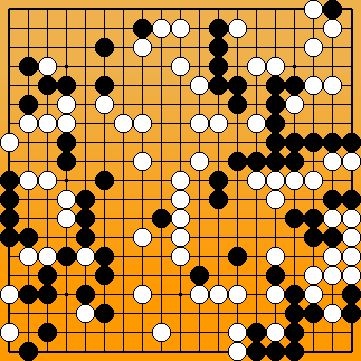
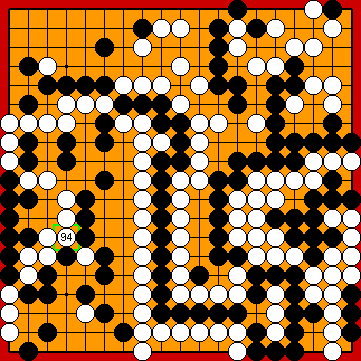
 : (
: ( 2022MainLine
2022MainLine 1093a
1093a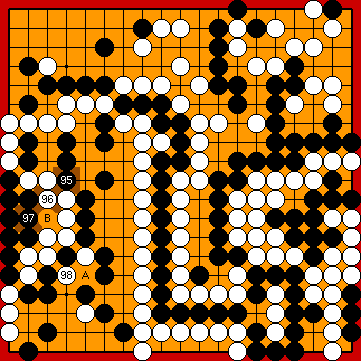
 :
: , instead.
, instead. , and give double-atari at
, and give double-atari at  after Black captured with
after Black captured with  , so getting an independently alive shape on the left side.
, so getting an independently alive shape on the left side. :
: :
: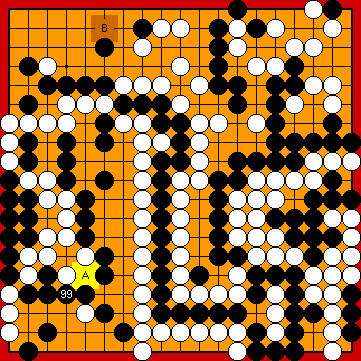
 :
: in the upper left corner.
in the upper left corner.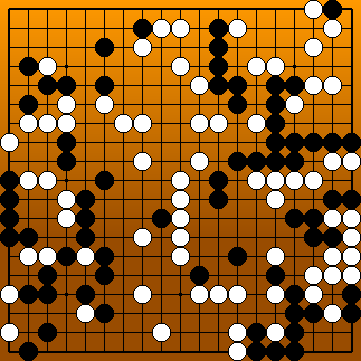
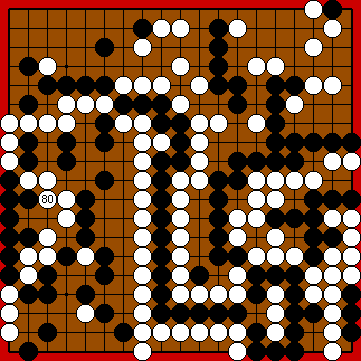
 :
: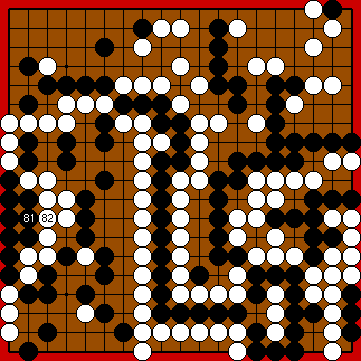
 :
: :
: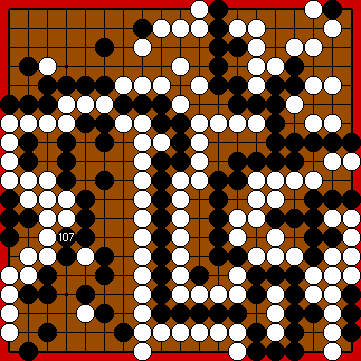
 :
: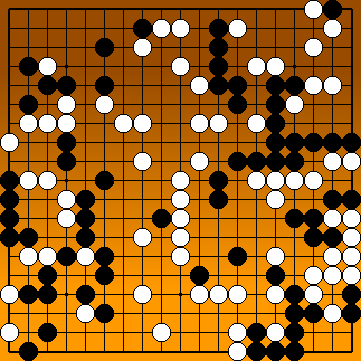
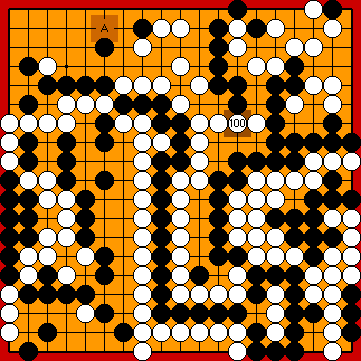
 :
: can be played also later, in principle. We will do without here, in order to simplify the comparison with the classical line of Fujisawa Hideyuki.
can be played also later, in principle. We will do without here, in order to simplify the comparison with the classical line of Fujisawa Hideyuki.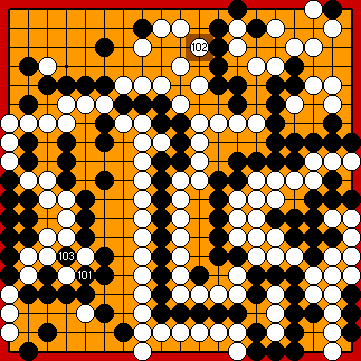
 :
: : (
: ( 103
103  2036
2036 , instead.
, instead. :
: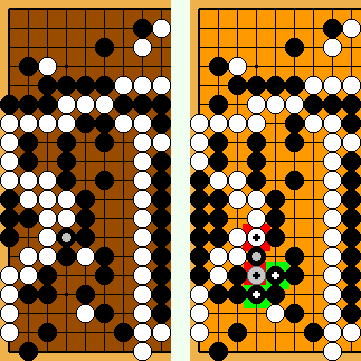
 ,
,  ) locally.
) locally.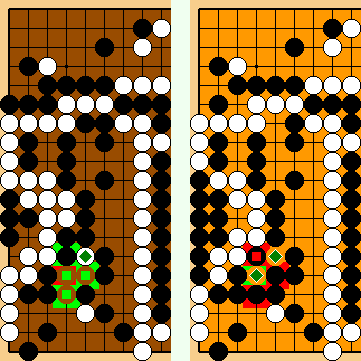
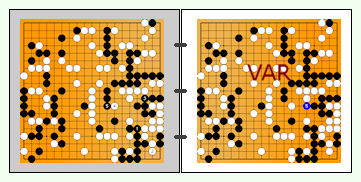
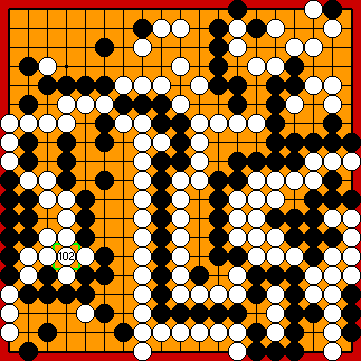
 2036
2036
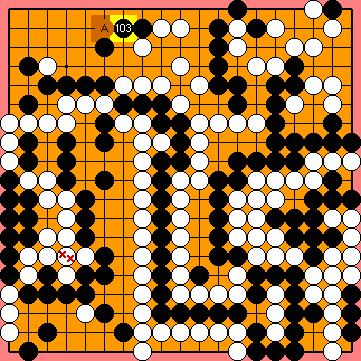
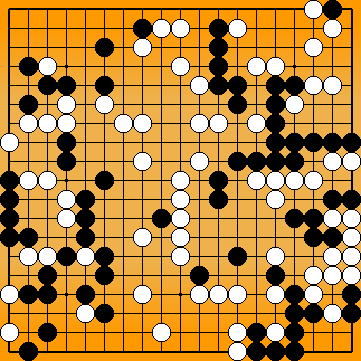
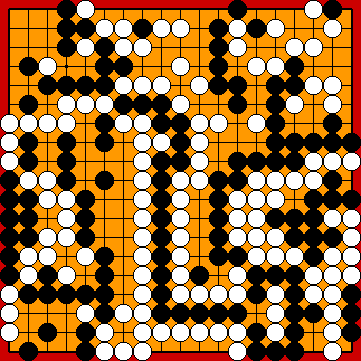
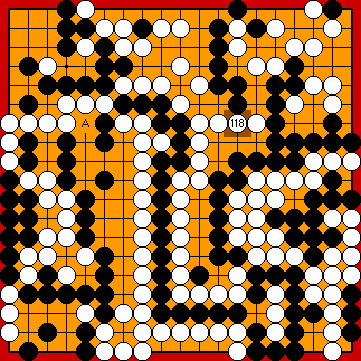
 :
: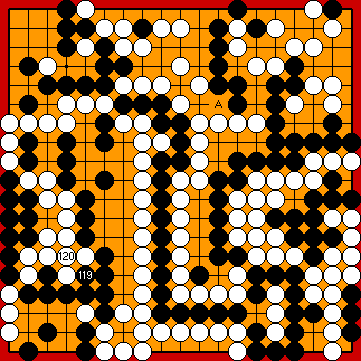
 :
: : (A
: (A 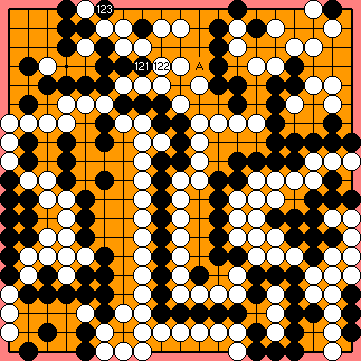
 :
: :
: at White's three stones below, Black would be unable to divide White's forces at the top.
at White's three stones below, Black would be unable to divide White's forces at the top. :
:
 :
: :
: :
: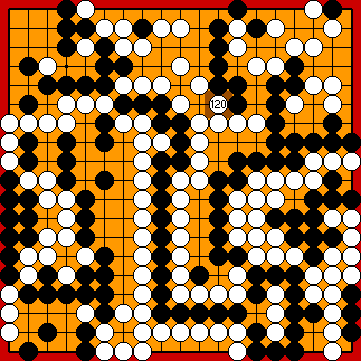
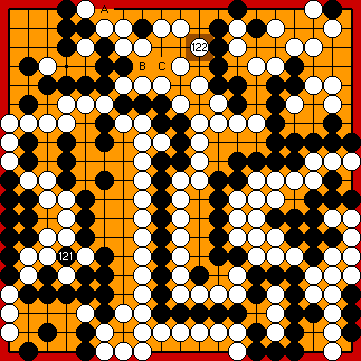
 at the top.
at the top.

